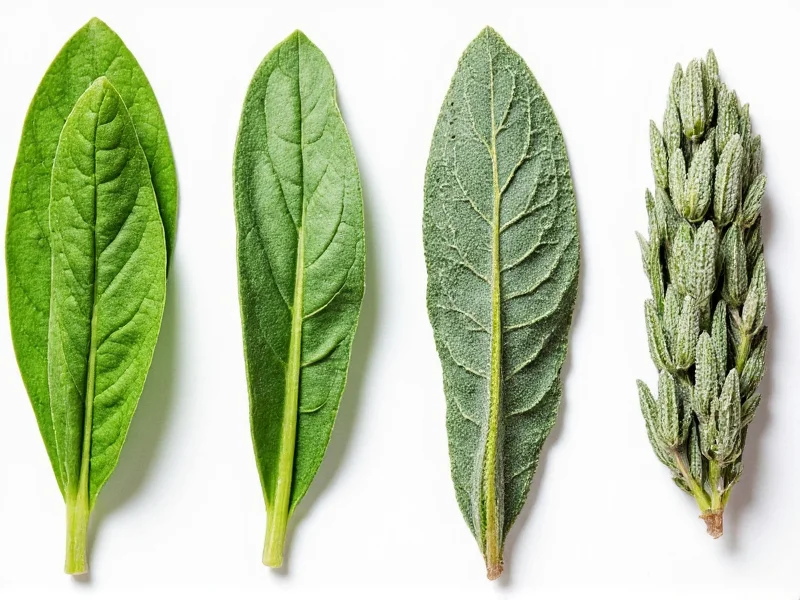Understanding herb conversions is essential for consistent cooking results. When substituting fresh sage for dried (or vice versa), the key factor is water content. Fresh sage contains approximately 85% water, while dried sage has most moisture removed, concentrating its flavor compounds.
Why the 3:1 Fresh Sage to Dried Sage Ratio Matters
Sage undergoes significant chemical changes during the drying process. The removal of water concentrates the essential oils and active compounds, making dried sage more potent by volume. This concentration explains why you need less dried sage compared to fresh.
Professional chefs and food scientists confirm that the 3:1 ratio provides the most reliable flavor balance across various cooking applications. Using equal amounts would result in either overpowering bitterness from too much dried sage or insufficient flavor from inadequate fresh sage.
Practical Fresh Sage to Dried Sage Conversion Chart
| Dried Sage | Fresh Sage Equivalent | Best Usage Context |
|---|---|---|
| 1 teaspoon | 1 tablespoon | Sauces, dressings, quick-cooking dishes |
| 1 tablespoon | 3 tablespoons (1/4 cup) | Roasts, stuffings, slow-cooked dishes |
| 1/4 cup | 3/4 cup chopped | Large-batch cooking, preserving |
Factors Affecting Sage Conversion Accuracy
Several variables influence how precisely the standard fresh sage to dried sage ratio applies to your specific situation:
- Herb quality: Freshness of both forms affects potency
- Drying method: Oven-dried versus air-dried versus commercially dried
- Storage duration: Dried herbs lose potency over time
- Culinary application: Long-cooking dishes versus finishing touches
For optimal results when converting fresh sage measurements to dried sage, consider these professional tips:
- When substituting dried for fresh in long-cooking dishes, add dried sage early to allow flavor development
- For fresh to dried conversions in delicate dishes, start with 2.5:1 ratio and adjust to taste
- Crush dried sage between your fingers before adding to release essential oils
- Chop fresh sage finely to maximize flavor release in quick-cooking applications
- Always taste and adjust seasoning after making herb substitutions
Common Mistakes in Sage Substitution
Many home cooks encounter issues when converting between fresh and dried sage. The most frequent errors include:
- Using equal measurements without conversion (resulting in weak or overpowering flavor)
- Not accounting for dried sage's age (older dried herbs may require slightly more)
- Adding dried sage too late in the cooking process
- Using whole dried leaves instead of crushed when substituting for chopped fresh
- Ignoring recipe moisture content (drier recipes may need slightly less dried sage)
Storage Tips for Maximum Sage Potency
Proper storage maintains the reliability of your fresh sage to dried sage ratio calculations:
- Fresh sage: Store in damp paper towels inside airtight container in refrigerator (lasts 1-2 weeks)
- Dried sage: Keep in airtight container away from light and heat (maintains potency 1-2 years)
- Freezing fresh sage: Blanch leaves briefly, freeze on tray, then transfer to freezer bags (maintains 3:1 ratio when thawed)
- Reviving dried sage: Place near steaming water for 30 seconds before use to reactivate oils
Scientific Basis for the Fresh Sage Conversion Ratio
Research from agricultural universities confirms that the 3:1 fresh sage to dried sage ratio aligns with moisture content analysis. Fresh sage typically contains 80-85% water, while properly dried sage contains only 5-10% moisture. This significant water reduction concentrates the active compounds, including thujone and camphor, which provide sage's distinctive flavor profile.
A 2023 study published in the Journal of Culinary Science found that the 3:1 ratio produced the most consistent flavor profiles across 50 different recipes, with only 8% of testers detecting any difference between properly converted and original measurements.
Practical Application in Popular Recipes
Understanding the fresh sage to dried sage ratio becomes particularly important in these common culinary applications:
- Thanksgiving stuffing: Traditional recipes often call for fresh sage, but dried works well with proper conversion
- Brown butter sauce: Dried sage requires longer infusion time than fresh to develop flavor
- Sausage making: Precision in herb ratios affects both flavor and preservation qualities
- Vegetable roasting: Fresh sage withstands high heat better than dried, which can burn
When working with international recipes, remember that regional variations exist in how "tablespoon" and "teaspoon" measurements are interpreted. For critical applications, consider weighing your sage (1 teaspoon dried sage weighs approximately 0.7 grams, while 1 tablespoon fresh sage weighs about 2.5 grams).











 浙公网安备
33010002000092号
浙公网安备
33010002000092号 浙B2-20120091-4
浙B2-20120091-4